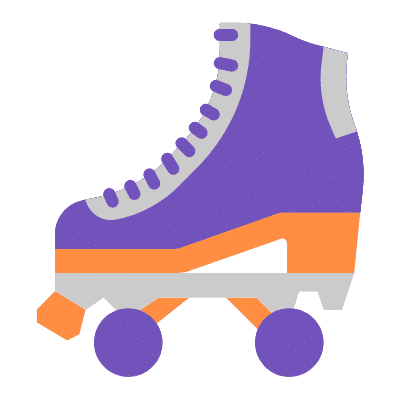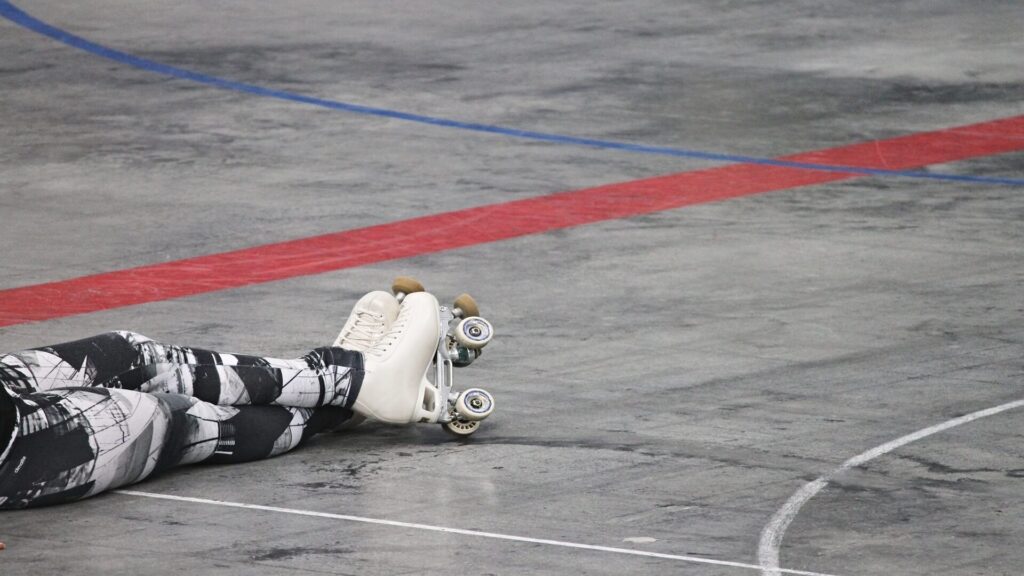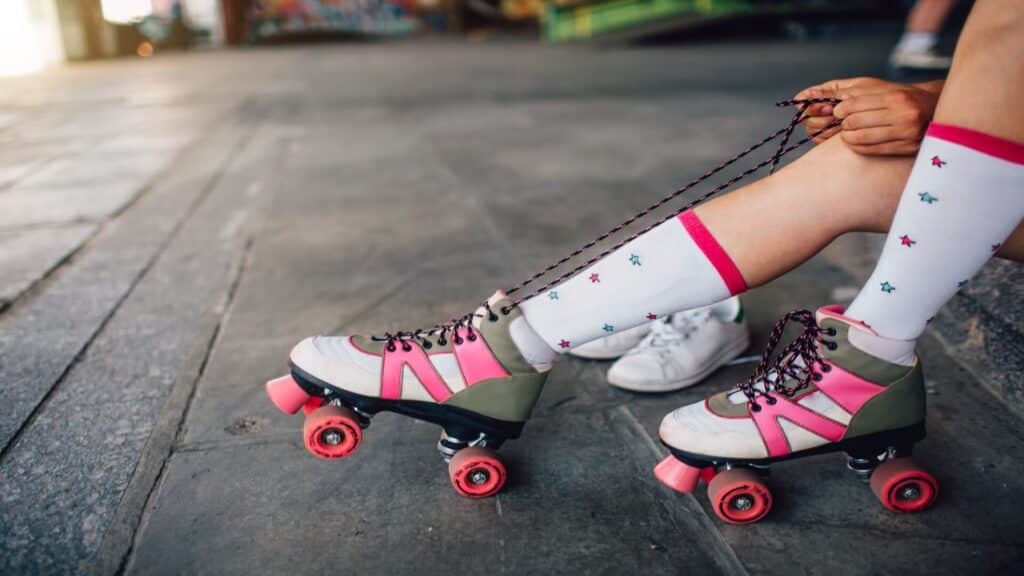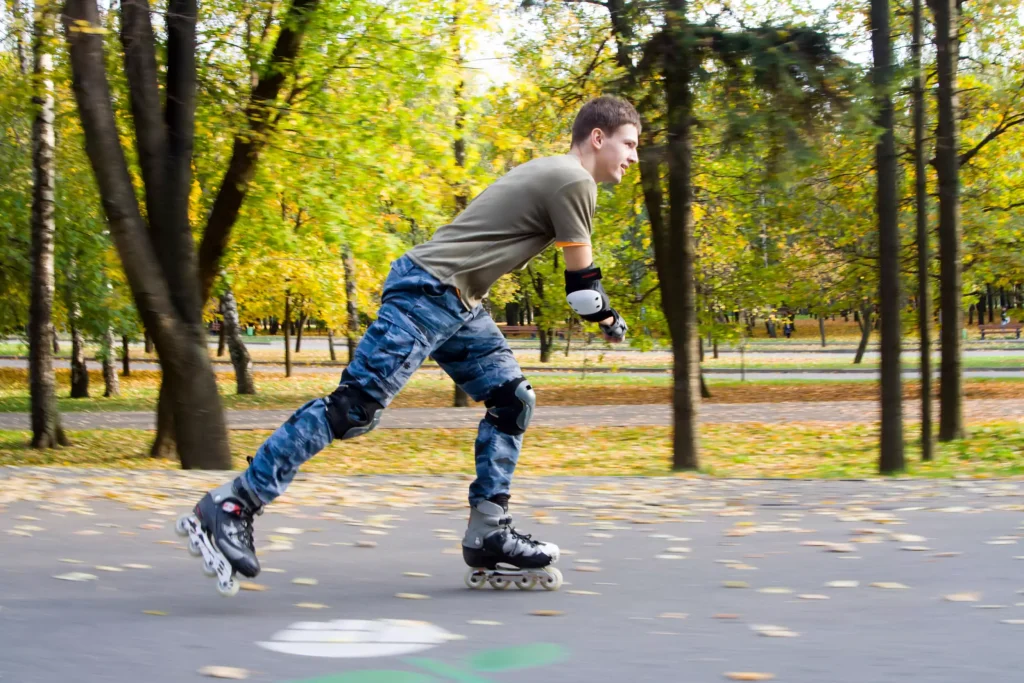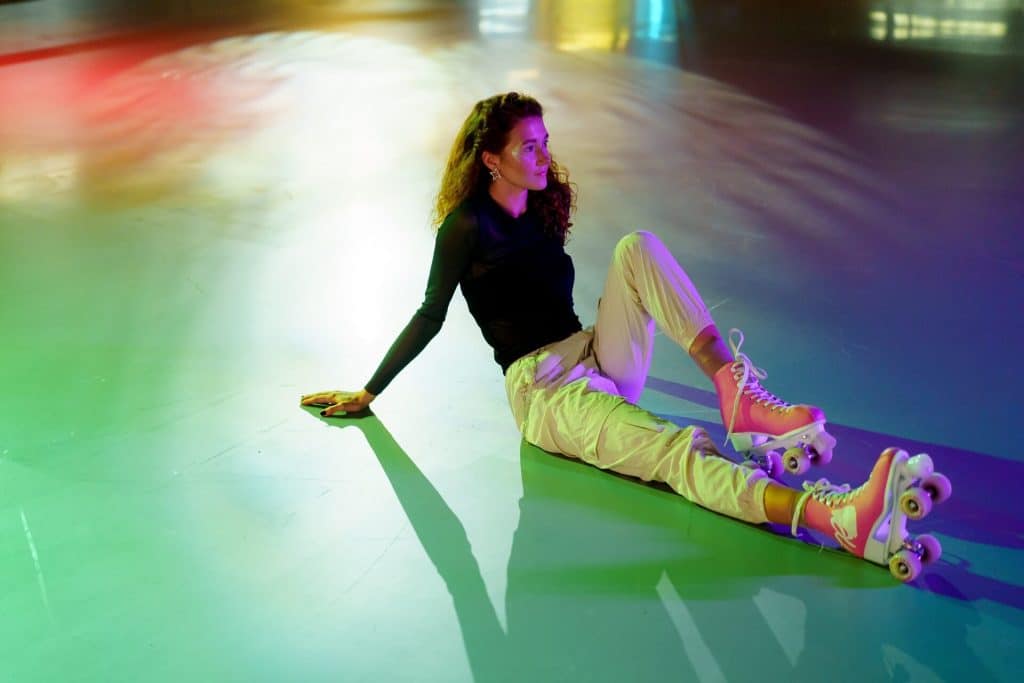As glamorous as contemporary skating competitions are, the history of skating has also been something to behold, so much so that many have asked, “When did roller skating become popular?”
Even though it sounds crazy, roller skating was first thought of at a party. John Joseph Merlin, a Belgian inventor, decided to display his new wheeled shoes in 1735.
As a result, he skated into the party and straightaway collided with a mirror. Given the fame of roller skating, it’s a small price to pay. Later in 1819, Mr. Petitbled got a patent for the roller skate design. At that time, skates were straight and only had three wheels.
Aside from that, it was hard to turn. Then James Leonard Plimpton made a roller skate with four wheels that let a person move quickly and turn quickly. In 1900, restaurants that served food on skate-wearing bevies made skating very popular.
Table of Contents
When was roller skating popular in the past?
Things were not the same in the ’80s. Teenagers and kids didn’t have phones then. There were no social media platforms for them to post selfies on, YouTube or Netflix to keep them entertained. Interestingly, despite these, when was roller skating famous is not as far as you think. People skate with their families and loved ones.
New York became a place filled with numerous roller rinks, such that Saturday night became a ritual for these venues. There were primarily two groups of people at the roller rinks. The first group comprises people having fun on the rink while the crowd cheers for them.
The second group was holding on to the railings for dear life. Nevertheless, everyone was addicted. It was a ritual that took place every Saturday night. The 1980s were different from now, but it was just as embarrassing to fall while roller skating then as it is now.
In-line skates appeared in the 1990s. Rollerblades were already common. These are just as cool as roller skates, if not cooler. Nevertheless, roller skating is important today, even though most people thought it wouldn’t be. People are going to links and parks with their families and friends to skate more and more.
The roller disco era
Roller skating was an everyday recreational activity in the U.S. before roller rinks were widely shut down. Between the 1930s and 1950s, called the “Golden Age” of roller skating, and the 1970s and 1980s, called the “Roller Disco” era, roller skating was very popular.
The Golden Age
Most blogs that discuss roller skating’s history do so through personal accounts. Michelle Trent recalled when she and the elders talked about their earlier roller-skating days while writing about her experience working with seniors. The blogger became interested in the sport’s history and discovered that as the Great Depression started to end in the late 1930s, roller skating grew in popularity. The Golden Age of roller skating officially began at this point.
“Every Friday night the local roller rink would host Teen Night. My friends and I would get all dolled up in our poodle skirts and saddle shoes to skate under the glittering disco ball to tunes like Chubby Checker’s “The Twist”- it was the bee’s knees!” recalls 83-year-old Mary Simmons of her 1950’s skating memories.
Bill Ford, a roller enthusiast whose parents first met at a Golden Age Chicago rink in 1941 has fond childhood memories: “Mom and Pop would strap old-fashioned clamp-style skates onto my brother and me each weekend. The streets weren’t yet overrun by cars back then, and all the neighborhood kids would pour out to zoom around the block doing spins and racing each other until the streetlights buzzed on.”
Disco Fever Revival
During the Roller Disco era, which lasted from the mid-1970s to the mid-1980s, roller skating experienced an unexpected and rapid surge back into the mainstream. The classic disco music and culture of the 70s fused with roller skating to create a vibrant new craze. Glamorous discos with mirror balls and neon lights popped up across America. Young people flocked to these flashy rinks to show off their skating choreography and fashionable outfits.
Popular films like Roller Boogie in 1979 and Xanudu in 1980 highlighted the trendiness of roller disco. Party-goers hoping to emulate John Travolta’s dance moves from Saturday Night Fever strapped on skates to boogie. Even for those lacking coordination, awkwardly clinging to the walls, or falling on their behinds, discos provided a hip place to see and be seen on the weekends.
The fleeting fad left such an impression that former President Ronald Reagan established March as National Roller Skating Month in 1983 as roller mania reached its height. Though short-lived, the roller disco phenomenon introduced a new generation to skating and paved the way for its nostalgic revival decades later.
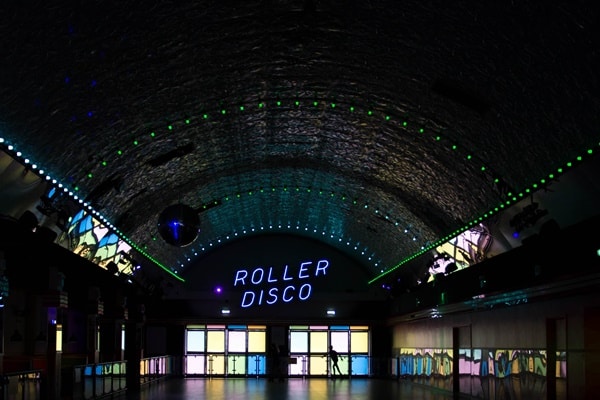
If you have wondered why roller skating is not an Olympic sport, you can find out here.
The Rise of Roller Derby
Beyond dance skating’s flashy presence, roller sports have also gained niche followings that ebb and flow with the decades. One example emerged back in the early 2000s when all-female roller derby leagues began making waves across North America.
These competitive contact skating teams, featuring badass names like the Hellcats and Slaughterhouse Sirens, breathed fresh life into roller sports starting around 2005. The appeal was part in-your-face, punk-rock rebellion and part athletic prowess meets WWE showmanship.
At its height around 2011, over 1,200 amateur leagues were registered worldwide according to the Women’s Flat Track Derby Association. ESPN even syndicated a sports reality show “Rollergirls” about the TXRD Lonestar Rollergirls. Though growth has slowed, popularity endures thanks to derby’s rowdy, inclusive vibe showcasing skating’s versatile athleticism.
The Revolution of Inline Skates
Just as traditional quad skates were fading from their disco glory days, a revolutionary new skate emerged keeping wheels rolling through the 1990s and beyond. Inline rollerblades swapped quads’ front and back wheel pairs for a single row of urethane wheels beneath a slick boot.
This streamlined urban design made skating more accessible for street surfing and added speed for daredevils. Aggressive inline took these tricks to the extreme with gravity-defying stunts launched from vert ramps and handrails. X Games and Dew Tour competitions launched careers for rollerblading professionals and branded superstars like Arlo Eisenberg and Chris Haffey.
While inlines enabled greater athletic feats, their learning curve and lack of ankle support deterred casual hobbyists. Still to this day, over 5 million Americans strap on rollerblades annually chasing fresh air and exercising in a unique rolling frame. Innovations combining inline and quad features aim to perfect skating for a new generation.
How popular is roller skating these days?
The Northridge Skateland roller skating rink closed in 2020 and became a shelter for homeless people. Unfortunately, even though this made things better for one group, it made things worse for another.
Like Skateland, several other roller rinks have closed across the United States in recent decades. One of the most iconic rinks in the Bay Area, Golden Skate in San Francisco, shuttered its doors for good in the spring of 2022. Over 700 rinks nationwide have gone dark since the sport’s heyday in the 1970s, prompting skating enthusiast Mark Falso to create the website Dead Rinks to document the closures starting in 2018.
Recent years have seen continued closures of classic roller rinks nationwide. But has participation in rolling sports also declined? According to 2021 sports data, over 11 million Americans strapped on skates – but current numbers still pale compared to roller skating’s zenith.
In its 1970s heyday, double-wheeled quads dominated as the skate of choice on disco floors. Yet as of 2017 quad skates saw under 6.5 million devotees, while sleek inline rollerblades attracted over 5 million enthusiasts. Still, these dual rolling branches draw devotees of all ages. Surveys indicate over 60% of kids ages 6-12 embark on outdoor wheel fun annually, nearly double the share of adults over 45.
Indeed, the COVID pandemic seemingly spun interest back upward. While lockdowns shuttered rinks, outdoor solo skating, viral skate media, and influencer culture introduced Gen Z to self-expression on wheels. Iconic brands like Moxi saw sales leap as social videos spotlighting dances, meets, and styles accrued billions of views.
So is roller passion here to stay? Analysts are unsure if fresh momentum can counter decades of decline. The fact is twice as many Americans skated in 2006 versus today – yet TikTok may spawn a revival no statistic saw coming. Love for lifestyle, fitness, and friendship glides on in new forms, as joint-protecting wheels carry youth culture into the 2020s and beyond.
COVID-era revival
However, the COVID-19 pandemic may have unexpectedly reignited interest in strapping on wheels…TikTok videos showcasing skating tricks, meet-ups, and vintage style now generate billions of views.
So is this fresh momentum a fleeting fad or the start of a roller renaissance? Industry observers are divided. While some see parallels to short-lived trends like disco, others spot key differences that signal more staying power.
What keeps analysts optimistic is data showing sustained interest even as lockdowns lift. Outdoor events and competitions are growing, influencer collaborations continue, and serious skaters are migrating to new platforms like Twitch and YouTube Shorts.
Most promising is the demographic shift with Millennials and Gen Zers embracing skating for self-care, social connection, and self-expression in an anxious era. Perhaps what the 70s disco craze sparked is actually roller skating finding its true purpose for modern times.
If newer generations sustain a passion for the lifestyle, experts foresee participation growing by at least 5% over the next 3-5 years. While traditional rinks may never regain their peak numbers, analysts say innovative digital spaces and outdoor meet-up groups can keep interest rolling.
This generational shift combined with skating’s adaptability gives hope that the current boom has better odds of sticking. As trends change, the appeal of the skate community, creative flow, and rhythmic motion look to captivate audiences far into the future.
Final Words
The story of roller skating is one of dizzying highs and lows across changing eras. Yet no matter the decade, wheels keep turning and skates retain their timeless appeal.
What drives such passion through peaks and valleys? In part, it is skating’s accessibility – requiring little more than a smooth space, a set of skates, and a free spirit seeking fun. Generations have tapped into that carefree glide to find friendship, creativity, competition, and even love on four polyurethane wheels.
Times change, trends fade, and rinks shutter – but skaters adapt. COVID shutdowns couldn’t suppress a new generation’s urge to roll. TikTok fills the void of empty rinks by igniting online skate culture that lures millions. The digital world brings skating full circle to the streets where it first took off.
So while traditional numbers may never fully rebound, innovators will ensure skating’s heartbeat echoes on. Competitions, communities, influencers, and creators are evolving wheeled sports for the modern era. And as long as the appeal of flow, freedom, and rhythmic motion resonate – gliding on skates shall deliver joy far into the future.
Stay tuned for more information and guides about roller skating!


